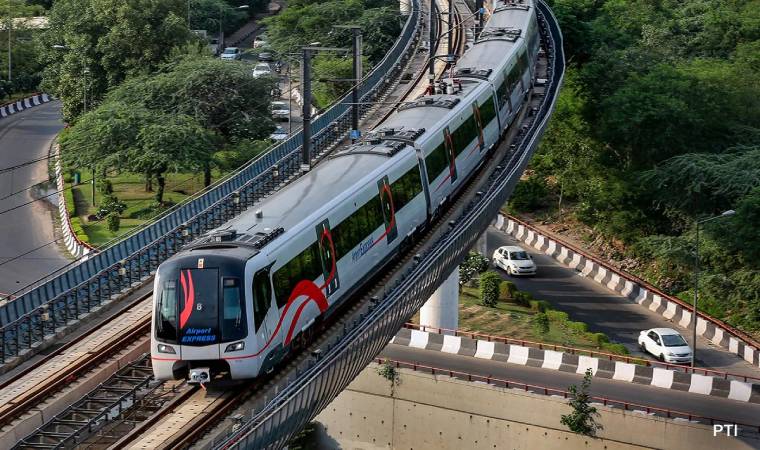India’s Independence Day, celebrated annually on 15 August, is a grand occasion that stirs national pride and brings the country together in remembrance and celebration. One of the most iconic events associated with this day is the Independence Day parade held at the Red Fort in Delhi. While the parade is a symbol of India’s unity, courage, and progress, it also significantly affects daily life in the capital, especially in terms of public transportation.
A Day of Pride and Planning- 15 August
How preparations for the event begin weeks in advance? What are the resulting effects on metro services and overall public movement? From increased security to rerouted trains and packed platforms, the impact is felt by lakhs of commuters. In this article you are going to explore the significance of the parade. Understanding these changes can help citizens better navigate the week leading up to the national celebration.

The 15 August Parade and Its Importance
The 15 August parade is one of the most watched events in India. It showcases India’s military strength, cultural diversity, and developmental achievements. The Prime Minister hoists the national flag at the Red Fort and delivers an address to the nation. This is followed by a ceremonial parade involving the armed forces, police units, schoolchildren, and cultural groups from various states.
The event is attended by thousands, including dignitaries, special invitees, and the general public. Due to its high-profile nature and symbolic value, security arrangements are unparalleled. The entire region surrounding the Red Fort is sealed off, and nearby areas undergo extensive preparations.
However, the grandeur of the parade brings with it significant logistical challenges. One of the major areas affected is Delhi’s public transport system, particularly the metro.
Pre-Parade Preparations and Early Impact
The planning for the 15 August parade begins weeks in advance. Security drills, barricading, and road closures are put into place to ensure the safety of attendees and the smooth execution of the event. These early measures already begin to influence public mobility.
In the week leading up to Independence Day, metro stations such as Chandni Chowk, Lal Qila, Jama Masjid, and Delhi Gate witness a surge in footfall. This is largely due to daily commuters adjusting their routines and increased surveillance pushing people to opt for metro travel over private vehicles.
Authorities also start implementing controlled access to certain metro stations. Parking at several metro stations is suspended, while some stations near the Red Fort are shut down entirely during specific hours. As a result, commuters experience longer travel times and more crowded stations, especially during peak hours.
High Alert on Metro Lines and Routes
Security is at its highest in Delhi around Independence Day. The Delhi Metro Rail Corporation (DMRC), in coordination with Delhi Police and paramilitary forces, places metro stations under heightened surveillance. Luggage checks, frisking, and baggage scanners are intensified.
Entry and exit points at certain metro stations are restricted. For example, on 13 to 15 August, stations near the Red Fort area such as Lal Qila and Jama Masjid are often temporarily closed. Trains pass through without halting. Similarly, Rajiv Chowk, being a major interchange, sees overwhelming crowds, as commuters are forced to reroute through central locations.

These restrictions, although essential for national security, add to the stress of daily travel. People working in government offices, Connaught Place, Old Delhi, and surrounding areas bear the brunt of these changes. Even offices that are not directly in the affected zones experience lower attendance due to commuting hurdles.
Spike in Crowd Due to Public Sentiment and Events
Another contributing factor to metro congestion is the patriotic sentiment that drives people to participate or witness Independence Day events. Families, students, and tourists travel to Delhi or move around the city to take part in flag hoisting ceremonies, cultural programs, and other community celebrations.
Many schools organize trips for children to watch the parade rehearsals. These rehearsals are held in the days before the main event and draw considerable crowds, especially at early morning hours. This contributes to unusually high demand on metro services from as early as 6 AM.
In addition, malls, markets, and monuments become popular destinations for people looking to enjoy the holiday. Despite the security checks and traffic barriers, public enthusiasm remains high, creating a continuous flow of passengers throughout the day.
Alternative Travel Plans and Public Response
Commuters respond in different ways to these disruptions. Some shift their work-from-home schedules to avoid travel altogether during the affected days. Others reschedule meetings or plan their journeys with extra buffer time. There is also a significant rise in carpooling and app-based cab bookings, although these services are often delayed due to diverted roads and police checkpoints.
The Delhi Metro also issues public advisories through social media and news channels. These advisories help passengers plan their journeys better. Updates about station closures, expected congestion times, and suggested alternative routes are shared widely.

Despite these efforts, confusion and delays are common. First-time visitors and tourists are especially affected. Many are caught off guard by the sudden closure of metro stations or roadblocks in the city centre.
Economic and Environmental Implications
The changes in public transportation during the 15 August week have both economic and environmental impacts. On one hand, increased reliance on public transport like the metro is beneficial in terms of reduced emissions and lower congestion compared to cars. On the other hand, overburdened metro services lead to decreased comfort and longer travel times, especially for the elderly and differently abled.
Small businesses and vendors around metro stations may see increased footfall, while those near restricted zones may experience losses due to limited access. E-commerce logistics and food delivery platforms also experience delays as delivery services slow down.
From a policy point of view, the situation highlights the need for better crowd management systems and real-time communication during national events.
Suggestions for Improvement
To minimize inconvenience to the public while maintaining high security standards, a few measures can be considered:
Advance Notification:
Authorities can issue detailed and updated travel advisories a week in advance, with visual maps and multilingual notices to cater to the city’s diverse population.
Staggered Entry:
Controlled entry into congested stations through digital passes or QR codes may ease pressure during peak times.
Shuttle Services:
Temporary shuttle bus services between closed metro stations and nearby accessible points could be introduced to bridge gaps.
Special Coaches:
Adding extra coaches on key lines during the affected period could accommodate more passengers and reduce waiting times.
Mobile Apps and Alerts:
A dedicated app or alert system providing real-time metro updates can greatly help daily commuters and tourists alike.
Celebrating with Caution and Convenience- 15 August
Independence Day is a moment of collective pride and celebration. The parade at the Red Fort, with its historic and symbolic significance, remains a central part of this national holiday. However, the excitement comes with practical challenges, especially in a densely populated city like Delhi.
Public transportation, particularly the metro, bears the brunt of the increased movement and heightened security. While necessary for public safety, these disruptions underline the importance of coordinated planning and transparent communication between authorities and citizens.
By preparing in advance and using alternative routes or adjusted schedules, commuters can still navigate the city effectively during the 15 August period. Meanwhile, authorities must continue to innovate and streamline their processes to ensure that the spirit of Independence Day remains accessible and enjoyable for all.














